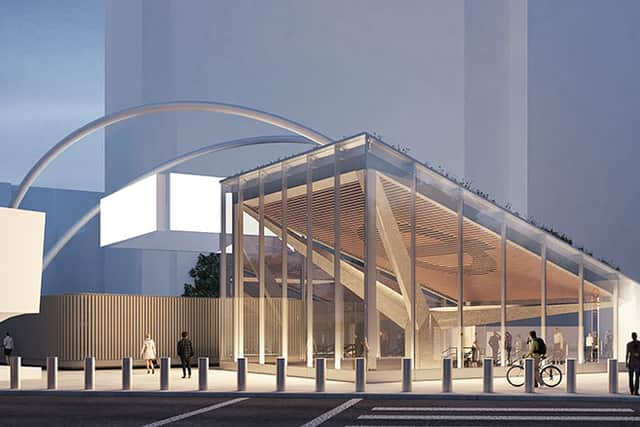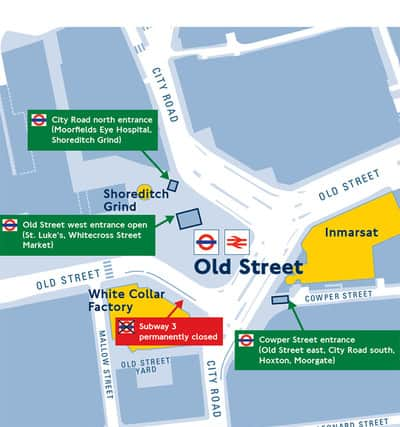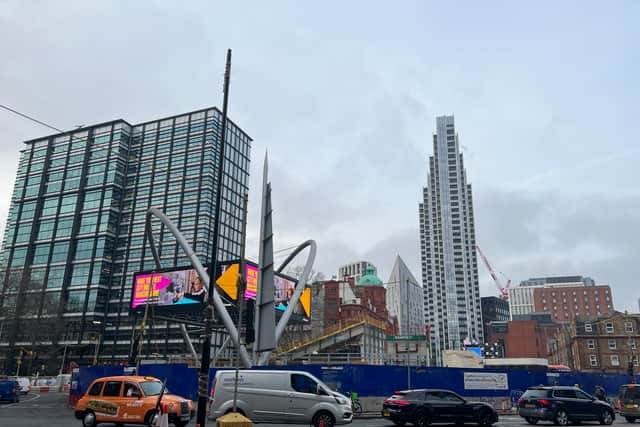When will Old Street roundabout be finished? TfL announces revised date
and live on Freeview channel 276
Anyone who’s passed through Old Street in the last few years will have wondered how long the construction work above the station will continue.
The roundabout, which will no longer function as such, has been talked about as being redesigned as far back as spring 2014, with construction finally beginning in early 2019.
Advertisement
Hide AdAdvertisement
Hide AdTransport for London (TfL) has announced that the full project will be completed in early 2024, having orignally been scheduled for 2020.
Segregated cycle lanes and pedestrian crossings are due to be finished this summer, with access to the station completed next year.
The Old Street roundabout reconstruction has cost £112m to date. TfL cited the Covid pandemic as one of the reason that the completion date got pushed back, as it forced work on the site to be haulted for three months and then slowed construction down due to social distancing measures.
But further delays followed, including the discovery of unrecorded utilities infrastructure.
Advertisement
Hide AdAdvertisement
Hide Ad

Redesign
Redesigning the roundabout became a priority for TfL, given the frequency of traffic accidents occurring.
In the 10 years between 2009-18, there were 215 collisions resulting in injury, including two fatalities and 22 serious injuries.


What the new gyratory system will look like
The new design cuts off one of the arms of the roundabout to traffic, on the northwest side, with this area becoming a public space. After completion, there will be fully segregated cycle lanes with their own traffic signals.
There will be new pedestrian crossings to make the area above the station easier to traverse on foot, with completion of both expected in the summer of this year.
Advertisement
Hide AdAdvertisement
Hide AdTwo new passenger entrances to the station below will be installed, as well as an upgraded retail concourse.
‘More sustainable’
Nick Fairholme, TfL’s director of capital delivery, said: “Our work to transform Old Street will be a huge boost to everyone who travels to the area, making sustainable journeys by public transport and on foot or by bike much safer and easier.
“We’re working hard to complete the project as quickly as possible and are sorry for the disruption this delay will cause to people in the area.
“Mr Fairholme added: “I’d like to thank everyone in the area for their patience during this work and we’ll continue to work closely with Islington and Hackney Councils, local residents and businesses to ensure everyone can benefit from these changes as soon as possible.”
Advertisement
Hide AdAdvertisement
Hide Ad

‘Far too long’
Londoners have not been impressed with how long it has taken to complete construction works above the Tube station, with many taking a tongue-in-cheek response to the redevelopment:
The Old Street roundabout is a reminder that we are all simply works in progress…
— PJ Somervelle 🌟 (@PjSomervelle) February 19, 2023
honestly good for the old street roundabout. she is taking her time and will be ready when she’s ready!!
— monica heisey (@monicaheisey) December 15, 2022
The year is 2093 and Old Street roundabout is still not finished. Soon, they say but soon never comes
— Sarah (@thissarah) February 13, 2023
Keith Prince AM, London Assembly Member for Havering and Redbridge, said: “The Old Street roundabout project is taking far too long and costing far too much.”
He added: “This is a dangerous junction which urgently needs to be made safer for local residents. Sadiq Khan needs to stop making excuses and get this sorted.”
What they found while digging
Transport for London made some unexpected discoveries while excavating the site around Old Street, including a “previously unrecorded utilities infrastructure … which required careful and safe removal”. The transport body noted that “the state and complexity of the existing mechanical and electrical systems” of the station entrances which were built in the 1960s created further delay, with bespoke parts having to be ordered as they are no longer made by suppliers.
Comment Guidelines
National World encourages reader discussion on our stories. User feedback, insights and back-and-forth exchanges add a rich layer of context to reporting. Please review our Community Guidelines before commenting.
